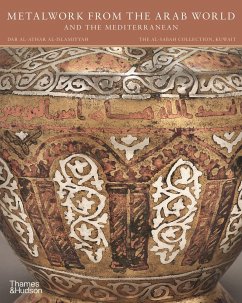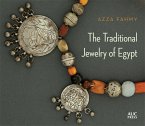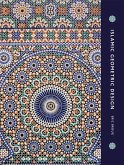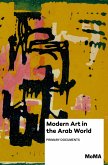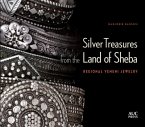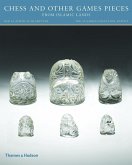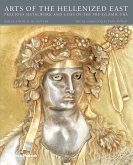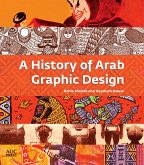Doris Behrens-Abouseif
Metalwork from the Arab World and the Mediterranean
Doris Behrens-Abouseif
Metalwork from the Arab World and the Mediterranean
- Gebundenes Buch
- Merkliste
- Auf die Merkliste
- Bewerten Bewerten
- Teilen
- Produkt teilen
- Produkterinnerung
- Produkterinnerung
The latest book in the series on the treasures of The al-Sabah Collection, Kuwait.
Andere Kunden interessierten sich auch für
![The Traditional Jewelry of Egypt The Traditional Jewelry of Egypt]() Azza FahmyThe Traditional Jewelry of Egypt45,99 €
Azza FahmyThe Traditional Jewelry of Egypt45,99 €![Islamic Geometric Design Islamic Geometric Design]() Eric BrougIslamic Geometric Design43,99 €
Eric BrougIslamic Geometric Design43,99 €![Modern Art in the Arab World Modern Art in the Arab World]() Modern Art in the Arab World38,99 €
Modern Art in the Arab World38,99 €![Silver Treasures from the Land of Sheba Silver Treasures from the Land of Sheba]() Marjorie RansomSilver Treasures from the Land of Sheba39,99 €
Marjorie RansomSilver Treasures from the Land of Sheba39,99 €![Chess and other Games Pieces from Islamic Lands Chess and other Games Pieces from Islamic Lands]() Deborah Freeman FahidChess and other Games Pieces from Islamic Lands37,99 €
Deborah Freeman FahidChess and other Games Pieces from Islamic Lands37,99 €![Arts of the Hellenized East Arts of the Hellenized East]() Martha L. CarterArts of the Hellenized East37,99 €
Martha L. CarterArts of the Hellenized East37,99 €![A History of Arab Graphic Design A History of Arab Graphic Design]() Bahia ShehabA History of Arab Graphic Design44,99 €
Bahia ShehabA History of Arab Graphic Design44,99 €-
-
-
The latest book in the series on the treasures of The al-Sabah Collection, Kuwait.
Produktdetails
- Produktdetails
- The al-Sabah Collection
- Verlag: Thames & Hudson Ltd
- Seitenzahl: 340
- Erscheinungstermin: 2. Dezember 2021
- Englisch
- Abmessung: 229mm x 284mm x 39mm
- Gewicht: 1976g
- ISBN-13: 9780500971116
- ISBN-10: 0500971110
- Artikelnr.: 62220472
- Herstellerkennzeichnung
- Libri GmbH
- Europaallee 1
- 36244 Bad Hersfeld
- gpsr@libri.de
- The al-Sabah Collection
- Verlag: Thames & Hudson Ltd
- Seitenzahl: 340
- Erscheinungstermin: 2. Dezember 2021
- Englisch
- Abmessung: 229mm x 284mm x 39mm
- Gewicht: 1976g
- ISBN-13: 9780500971116
- ISBN-10: 0500971110
- Artikelnr.: 62220472
- Herstellerkennzeichnung
- Libri GmbH
- Europaallee 1
- 36244 Bad Hersfeld
- gpsr@libri.de
Doris Behrens-Abouseif is Professor Emerita at SOAS, University of London, and previously Nasser D. Khalili Chair of Islamic Art and Archaeology at SOAS. Her many publications encompass a wide range of subjects of socio-cultural and art historical interest with a focus on Egypt and Syria from Late Antiquity and the early Islamic period to the 19th century, covering architecture, urbanism, material culture and the decorative arts.
Foreword by Sheikh Nasser Sabah Al-Ahmad Al-Sabah . Acknowledgements . 1.
The Legacy of Late Antiquity (4th to 8th centuries . 2. Before Mosul:
Metalwork in the Mediterranean World (7th to 12th centuries) . 3. The Rise
of Nobility in Metalware (12th to 13th centuries) . 4. The Formation of a
Mamluk Style in the Bahri Period (1250-1380s): The Transitional Style; The
Epigraphic Style; Engraved Vessels . 5. The Predominance of Engraving in
the Circassian Era (1380s-1517): Continuity and New Production; Late Mamluk
Refinement . 6. The Export Style (late 15th to early 16th century): The
Arabesque Group of Export Ware; The Knot-Work Group of Export Ware . 7.
Metalwork from Yemen (14th to 16th centuries) . 8. Post-Mamluk, Neo-Mamluk
and Ottoman Metalware (1517-1900s): Post-Mamluk and Neo-Mamluk Wares;
Ottoman and Ottoman Fusion . 9. Zoomorphic Finials and Fittings
The Legacy of Late Antiquity (4th to 8th centuries . 2. Before Mosul:
Metalwork in the Mediterranean World (7th to 12th centuries) . 3. The Rise
of Nobility in Metalware (12th to 13th centuries) . 4. The Formation of a
Mamluk Style in the Bahri Period (1250-1380s): The Transitional Style; The
Epigraphic Style; Engraved Vessels . 5. The Predominance of Engraving in
the Circassian Era (1380s-1517): Continuity and New Production; Late Mamluk
Refinement . 6. The Export Style (late 15th to early 16th century): The
Arabesque Group of Export Ware; The Knot-Work Group of Export Ware . 7.
Metalwork from Yemen (14th to 16th centuries) . 8. Post-Mamluk, Neo-Mamluk
and Ottoman Metalware (1517-1900s): Post-Mamluk and Neo-Mamluk Wares;
Ottoman and Ottoman Fusion . 9. Zoomorphic Finials and Fittings
Foreword by Sheikh Nasser Sabah Al-Ahmad Al-Sabah . Acknowledgements . 1.
The Legacy of Late Antiquity (4th to 8th centuries . 2. Before Mosul:
Metalwork in the Mediterranean World (7th to 12th centuries) . 3. The Rise
of Nobility in Metalware (12th to 13th centuries) . 4. The Formation of a
Mamluk Style in the Bahri Period (1250-1380s): The Transitional Style; The
Epigraphic Style; Engraved Vessels . 5. The Predominance of Engraving in
the Circassian Era (1380s-1517): Continuity and New Production; Late Mamluk
Refinement . 6. The Export Style (late 15th to early 16th century): The
Arabesque Group of Export Ware; The Knot-Work Group of Export Ware . 7.
Metalwork from Yemen (14th to 16th centuries) . 8. Post-Mamluk, Neo-Mamluk
and Ottoman Metalware (1517-1900s): Post-Mamluk and Neo-Mamluk Wares;
Ottoman and Ottoman Fusion . 9. Zoomorphic Finials and Fittings
The Legacy of Late Antiquity (4th to 8th centuries . 2. Before Mosul:
Metalwork in the Mediterranean World (7th to 12th centuries) . 3. The Rise
of Nobility in Metalware (12th to 13th centuries) . 4. The Formation of a
Mamluk Style in the Bahri Period (1250-1380s): The Transitional Style; The
Epigraphic Style; Engraved Vessels . 5. The Predominance of Engraving in
the Circassian Era (1380s-1517): Continuity and New Production; Late Mamluk
Refinement . 6. The Export Style (late 15th to early 16th century): The
Arabesque Group of Export Ware; The Knot-Work Group of Export Ware . 7.
Metalwork from Yemen (14th to 16th centuries) . 8. Post-Mamluk, Neo-Mamluk
and Ottoman Metalware (1517-1900s): Post-Mamluk and Neo-Mamluk Wares;
Ottoman and Ottoman Fusion . 9. Zoomorphic Finials and Fittings

